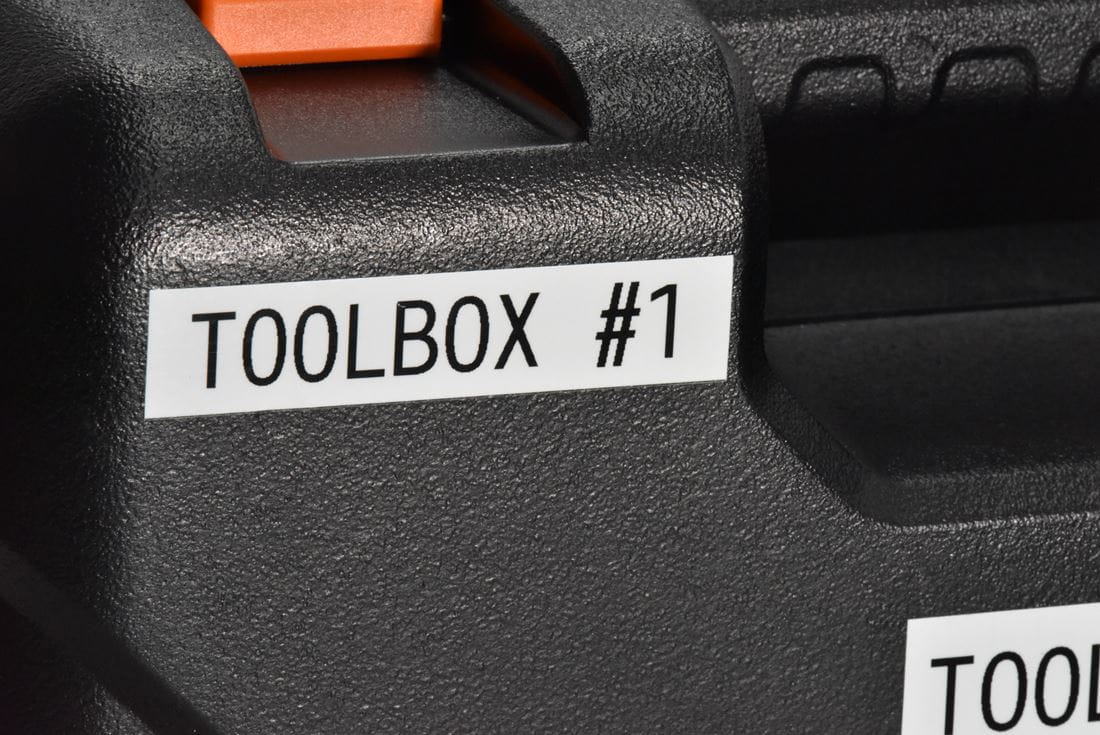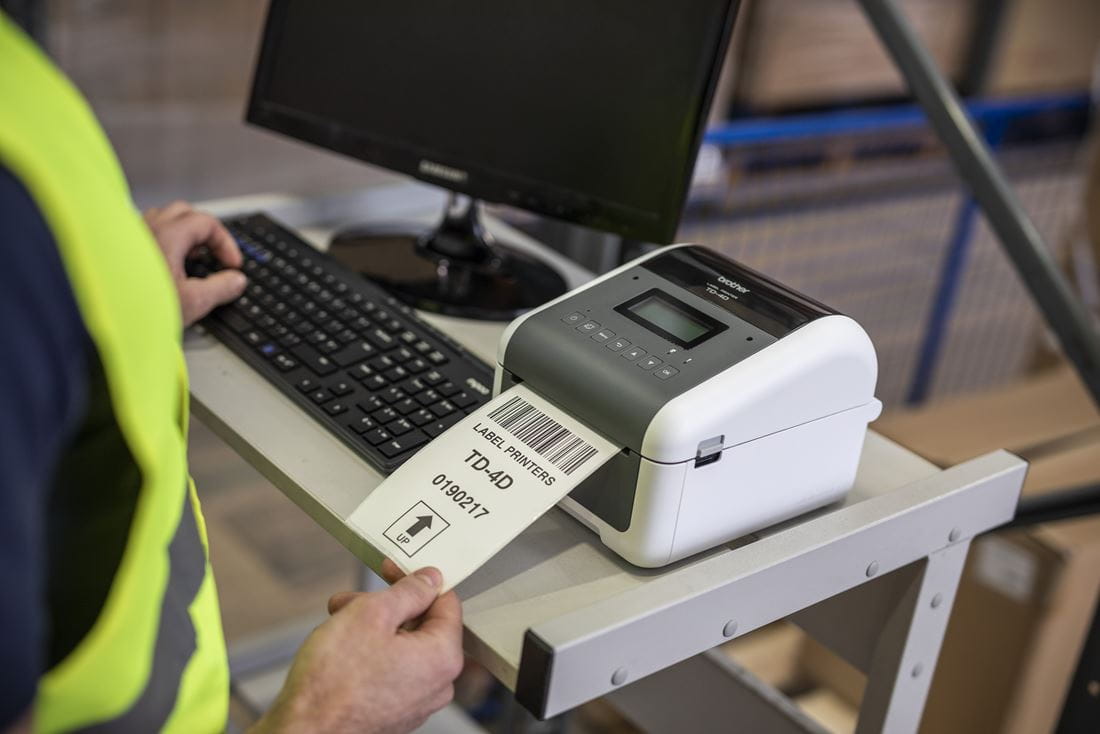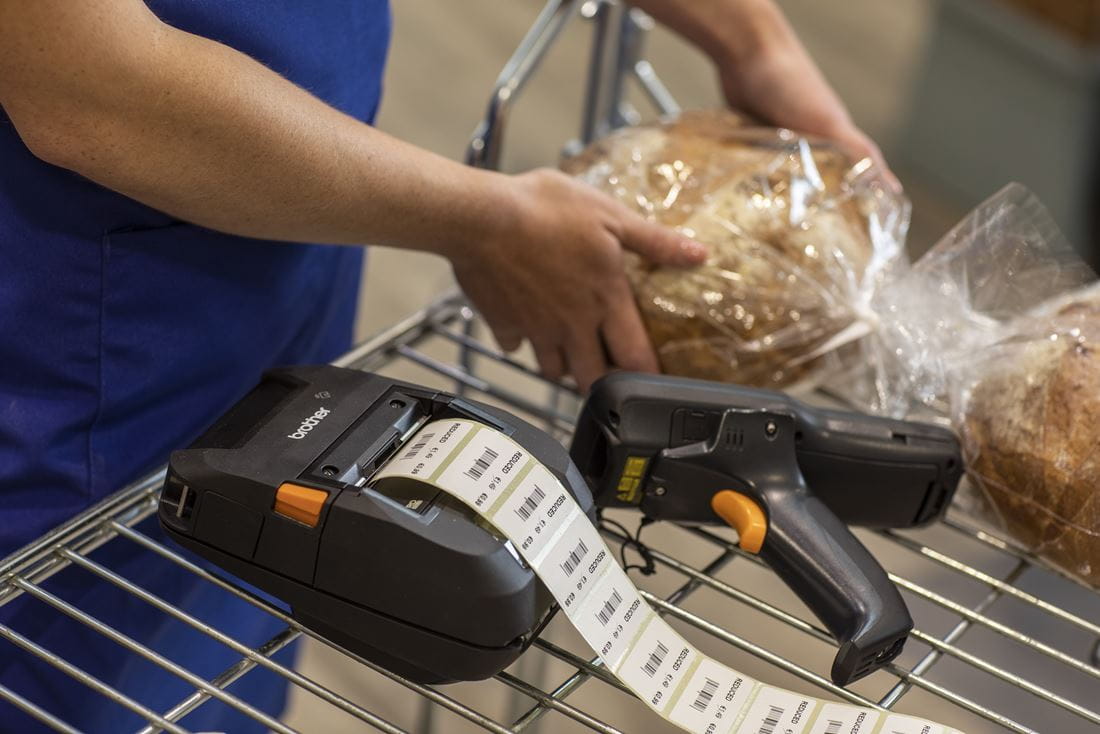Choosing the right label media and printing method
.jpg?h=720&iar=0&w=1920&rev=36358aeeea934b07bce65a5d230d3519)
Choosing the right label for your business involves more than just picking a size or adhesive. It’s about matching the label media and printing method to the conditions they’ll be used in and the outcomes you need.
From durability and readability to how a label performs in specific environments, there are a few key factors worth considering. In this guide, we’ll walk through what to look out for, including label lifespan, environmental conditions and use case suitability. Our goal is to help you find a setup that simply works - whether you're in logistics, healthcare, food production or beyond.
Step 1: Know Your Label's Purpose
Before diving into label materials or printing technologies, start by identifying your primary use case. Are you printing shipping labels, product packaging, asset tags or food labels? Thinking about how and where your labels will be used helps determine what matters most, be it durability, legibility, temperature resistance or cost-efficiency.
Once you understand the demands of your application, you can then choose between the two main thermal printing methods: direct thermal and thermal transfer.
Direct Thermal (DT) printing is cost-effective and ideal for short-term labelling like shipping, receipts or temporary tags. On the other hand, Thermal Transfer (TT) printing uses a ribbon to create long-lasting, high-quality prints to produce more durable labels that hold up well in demanding environments. It's generally recommended for asset tags, product packaging, food labels, compliance labels or any labels for outdoor use.
If you're still deciding which approach is right for your intended use, our blog on Direct Thermal vs Thermal Transfer breaks down the differences in more detail. You can also explore the Complete Guide to Desktop Thermal Label Printers for a broader overview of how the technology works for thermal transfer printers.
With your print method decided, the next step is to assess how long your label needs to last and what kind of environment it needs to withstand. These factors will directly influence your choice of label material and ribbon type.
.jpg?h=737&w=1100&rev=4b1f9dd03f414cbcb1ac9f944d434938&hash=C374FC0F3FA317D69F870B40EE0C82C7)
Step 2: Define Your Label’s Lifespan & Environment
Not all labels are designed to last the same amount of time or withstand the same conditions. The environment they’re exposed to and how long they need to stay intact will influence both the material you choose and the printing method that supports it.
Here are some practical questions to help narrow down your options:
- How long does the label need to stay readable?
Think about the entire lifecycle of your product or process. Is this label needed for a few hours during shipping, several weeks in retail or multiple years for asset tracking or compliance? Short-term labels can typically rely on direct thermal printing and paper materials, while long-term labels often require thermal transfer printing and more durable synthetics.
- What will the label be exposed to?
Consider environmental elements like moisture, sunlight, abrasion, heat cold, or chemicals. For instance:
- Cold Storage: Labels exposed to refrigeration or freezing may need synthetic materials resistant to condensation and curling.
- Outdoor Use: UV-resistant materials are essential to prevent fading.
- Chemical Exposure: Industries like cleaning or manufacturing require chemical-resistant labels.
- Friction or Handling: Frequent handling necessitates abrasion-resistant coatings or film labels.
For more insights on label durability, refer to our blog on fade-resistant labels.

- Is the label for internal use or customer-facing?
Labels used behind the scenes (e.g. warehouse bin labels, internal inventory tags) might not need the same print quality or finish as those displayed to customers. In contrast, shelf-edge labels or packaging labels need to look professional and stay legible, often with branding or sharp barcodes.
- Will the label need to be scanned?
Scannability is especially important in logistics, retail and healthcare. A label that smudges, fades or peels too soon can cause delays, errors or compliance issues. In these cases, coated paper or synthetic materials paired with a suitable ribbon (if using thermal transfer) can ensure crisp, consistent results.
- Is there a regulatory or compliance component?
Certain industries have strict requirements for how information is displayed and preserved. For example:
- In healthcare, patient identification labels must remain legible and adhesive must remain secure, even after exposure to disinfectants or sanitisation procedures. This is part of broader healthcare safety standards that aim to reduce preventable errors.
- In food production, recent updates to Australia’s allergen labelling rules require clearer, more readable information. As of 25 February 2024, food businesses must follow the Plain English Allergen Labelling (PEAL) requirements, which include using simple terms and bold font to declare allergens like peanuts, milk and gluten.
By working through these questions, you’ll begin to build a clearer picture of what’s needed - not just in terms of materials, but also the kind of print technology and ribbon type that will provide lasting performance. It’s a way to prevent avoidable reprints, reduce waste and ensure your operations run more smoothly.

Step 3: Match Printing Method and Label Material to Application
Now that you know what you're labelling and why, it’s time to choose the best print method, label material and ribbon combination to match.
Start with your application:
- Short-term, indoor use (e.g. eCommerce shipping, receipts, inventory): Choose direct thermal.
As previously mentioned, direct thermal labels are designed for short-term indoor applications where speed and simplicity matter. They don’t require a ribbon, which can reduce costs and make them easier to manage - but they’re more sensitive to heat, light and abrasion. This makes them a good fit for shipping labels, receipts or temporary tags that don’t need to last long.
For businesses seeking reliable direct thermal printing solutions, the TD-4420DN offers 203dpi resolution and a large print width, ideal for barcode and label printing. You can choose between die-cut labels or continuous label paper rolls. Alternatively, the TD-4550DNWB provides 300dpi resolution with wireless connectivity options, suitable for high-volume printing needs.
- Long-term or high-durability needs (e.g. asset tracking, compliance, outdoor or refrigerated environments): Choose thermal transfer.
If you’ve picked thermal transfer as your printing method, the next step is to choose a material that suits your environment:
Uncoated Paper
Uncoated paper labels are a practical option for everyday labelling needs in controlled environments. They offer a clean, matte surface that works well for internal documentation, inventory tags or basic retail labelling. While not suited for high moisture or abrasion, they’re a cost-effective choice for general-purpose use.
Coated Paper
Coated paper labels provide a smoother surface for sharper, more defined printing - especially useful when barcodes or product details need to be scanned clearly. The added coating gives a layer of protection against smudging or light handling, making these labels a step up in durability from uncoated options. They’re often used in retail, logistics and shelf-edge applications.

Synthetic
Synthetic labels are built for tougher environments where durability is key. Resistant to water, chemicals and fading, they’re ideal for use in healthcare, warehousing or food services where labels may be exposed to refrigeration, cleaning agents or frequent contact. They offer a strong balance of longevity and reliability without compromising readability.
Film-Coated
Film-coated labels are the most robust option in this lineup, offering high resistance to abrasion, chemicals and extreme temperatures. These are best suited for industries with strict compliance requirements or challenging environments - like manufacturing, outdoor logistics or hazardous material handling. They’re designed to stay intact and legible, even in harsh conditions.
To make things easier, here’s a simplified breakdown of some common label types and where they tend to work best:
|
Label Type |
Print Method |
Durability |
Common Use Cases |
|
Direct Thermal |
Direct Thermal |
Short-term only |
Shipping, eCommerce address labels |
|
Uncoated Paper |
Thermal Transfer |
Moderate |
Office labelling, general stock management |
|
Coated Paper |
Thermal Transfer |
Slightly higher |
Food labelling, shelf-edge labels, logistics |
|
Synthetic |
Thermal Transfer |
High (resistant to smudge and fade) |
Healthcare, retail packaging, cold environments |
|
Film-Coated |
Thermal Transfer |
Very high (abrasion and chemical-resistant) |
Harsh or outdoor environments, regulatory compliance |
It’s also worth noting that label media comes in a few different formats:
- Thermal Paper (Full Page): Great for mobile printing with Brother's range of PJ portable printers - perfect for invoices, certificates or documents on the go.
- Die-Cut Labels: Available in a range of finishes and sizes, commonly used in retail, shipping and healthcare. For instance, Brother’s DK-11202 Die-Cut Shipping Labels offer consistency and ease of use. These labels are compatible with the QL series of Brother label printers such as the QL-1100 which is great for printing shipping labels.
- Continuous Paper Rolls: For tasks requiring variable label lengths, such as tickets or receipts, continuous length paper rolls are compatible with mobile printers like the RJ-4230B Portable Printer. Other continuous paper rolls such as the DK-22210 Continuous Paper Label Rolls provide flexibility. These rolls are compatible with Brother’s QL series printers, such as the QL-800 Professional Label Printer, which offers high-speed printing and the ability to print labels up to one metre in length.
- Ribbons: Options include premium wax, wax/resin or full resin to match your durability needs across different environments.
While the chart above offers a general guide, your specific needs - whether it’s print clarity, durability or regulatory compliance - will determine which combination of material and method is the best fit. You can explore Brother’s range of label tapes and rolls for more options. If you're unsure where to start, it's always worth talking to a Brother specialist who can help tailor a solution to your industry and workflow.

Step 4: Consider the Ribbon Type
If you’re using thermal transfer printing, the type of ribbon you choose plays a key role in how well your labels perform over time. Ribbons come in different formulations - each designed to suit specific environments, surfaces and durability requirements.
Wax ribbons are typically used for standard paper labels in low-impact settings. Wax/resin blends offer more durability, making them a reliable choice for labels that may be exposed to light moisture, handling or occasional friction. Full resin ribbons are the most robust, providing long-lasting, highly resistant prints that can withstand chemicals, extreme temperatures and abrasion.
|
Ribbon Type |
Durability Level |
Best For |
|
Wax/Resin Mix |
Mid-range |
Healthcare, logistics, retail and shipping |
|
Full Resin |
High |
Chemical exposure, freezing, abrasion |
Matching the right ribbon with the right label helps prevent fading, smudging or scanning issues, especially in industries with compliance needs or harsh conditions.
Let Brother Help You Choose
It’s not always obvious which label or ribbon is right for your setup, but that’s where we can help.
Get in touch with our team for tailored advice or take a look at our full range of label printers and label supplies to explore your options.

Resource Library
Be the first to receive exclusive offers and the latest news on our products and services directly in your inbox




